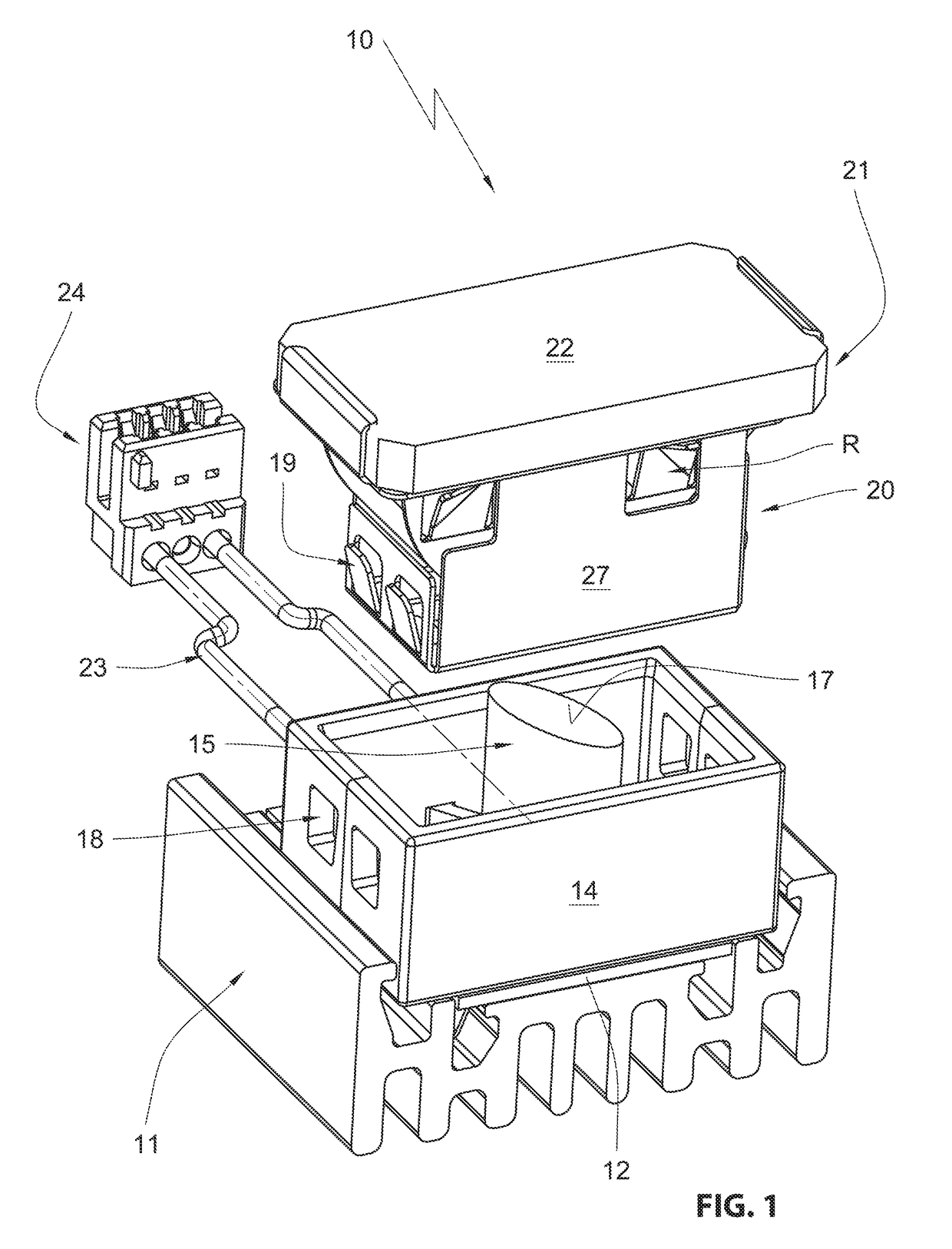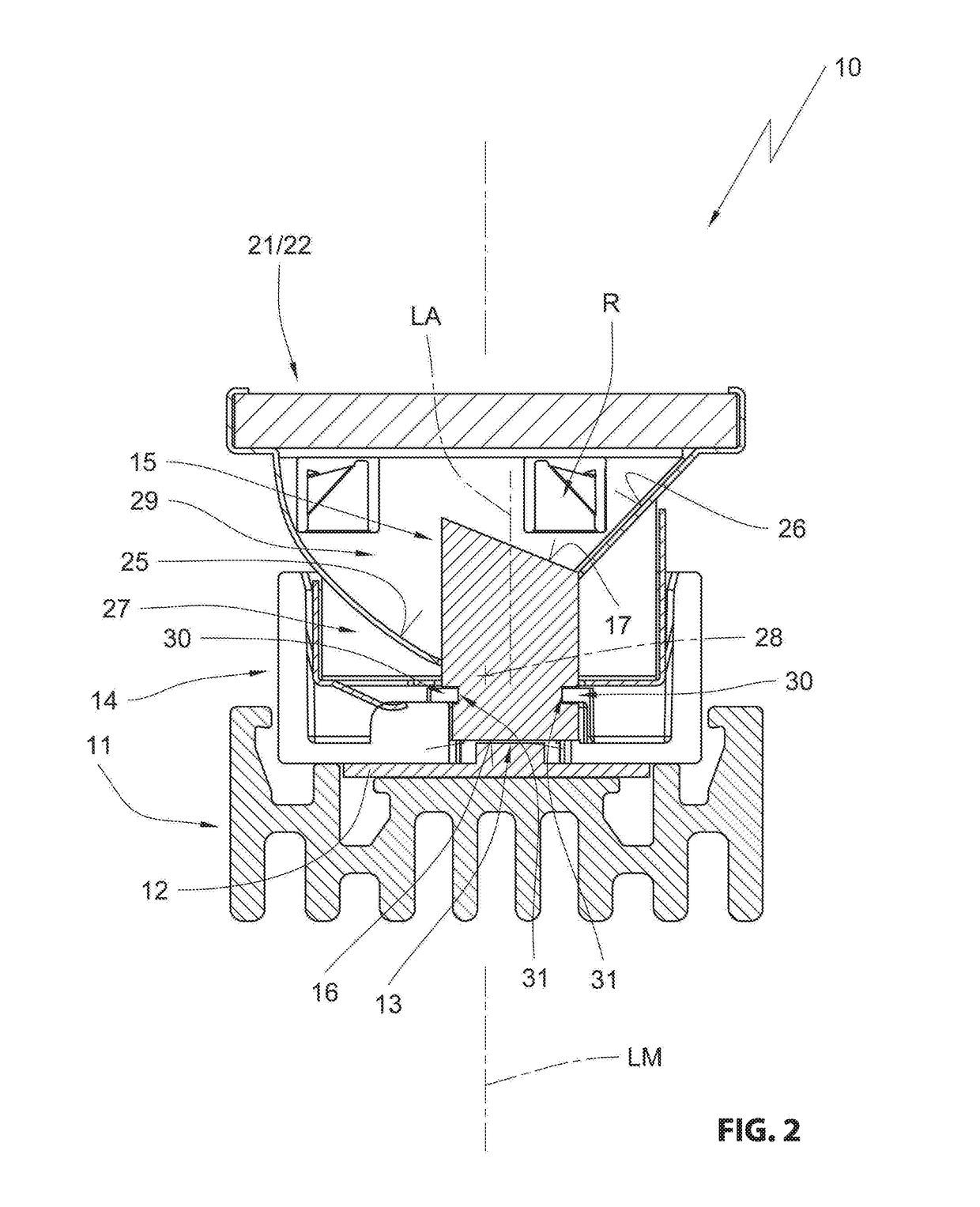Household appliance light
a technology for household appliances and light bulbs, which is applied in the field of household appliance light bulbs, can solve the problems of reducing the light yield and illumination quality of the interior of the house appliance, the typical contradictory and difficult to meet in their entirety, and the new challenges of engineers, so as to maximize the illumination of the interior space
- Summary
- Abstract
- Description
- Claims
- Application Information
AI Technical Summary
Benefits of technology
Problems solved by technology
Method used
Image
Examples
Embodiment Construction
[0038]In the drawing figures a household appliance light simply referred as a light is designated overall with the reference numeral 10. The household appliance light according to FIG. 1 includes a cooling element 11 on which a circuit board 12 is arranged with an applied LED 13 (FIG. 2)
[0039]Additionally a light housing 14 made from an electrically and thermally insulating material like e.g. plastic or ceramic is arranged on the cooling element wherein a light conductor 15 is arranged in the light housing. In the instant embodiment this is a rod shaped light conductor made from glass. The light conductor includes a light entry surface 16 that is arranged proximal to the LED (FIG. 2) and a light exit surface 17 that is arranged remote from the LED. The light exit surface 17 is inclined relative to a center axis of the light conductor 15. With respect to the circuit board 12 the center axis is sloped downward towards the circuit board 12. Furthermore the light exit surface is configu...
PUM
 Login to View More
Login to View More Abstract
Description
Claims
Application Information
 Login to View More
Login to View More - R&D
- Intellectual Property
- Life Sciences
- Materials
- Tech Scout
- Unparalleled Data Quality
- Higher Quality Content
- 60% Fewer Hallucinations
Browse by: Latest US Patents, China's latest patents, Technical Efficacy Thesaurus, Application Domain, Technology Topic, Popular Technical Reports.
© 2025 PatSnap. All rights reserved.Legal|Privacy policy|Modern Slavery Act Transparency Statement|Sitemap|About US| Contact US: help@patsnap.com



